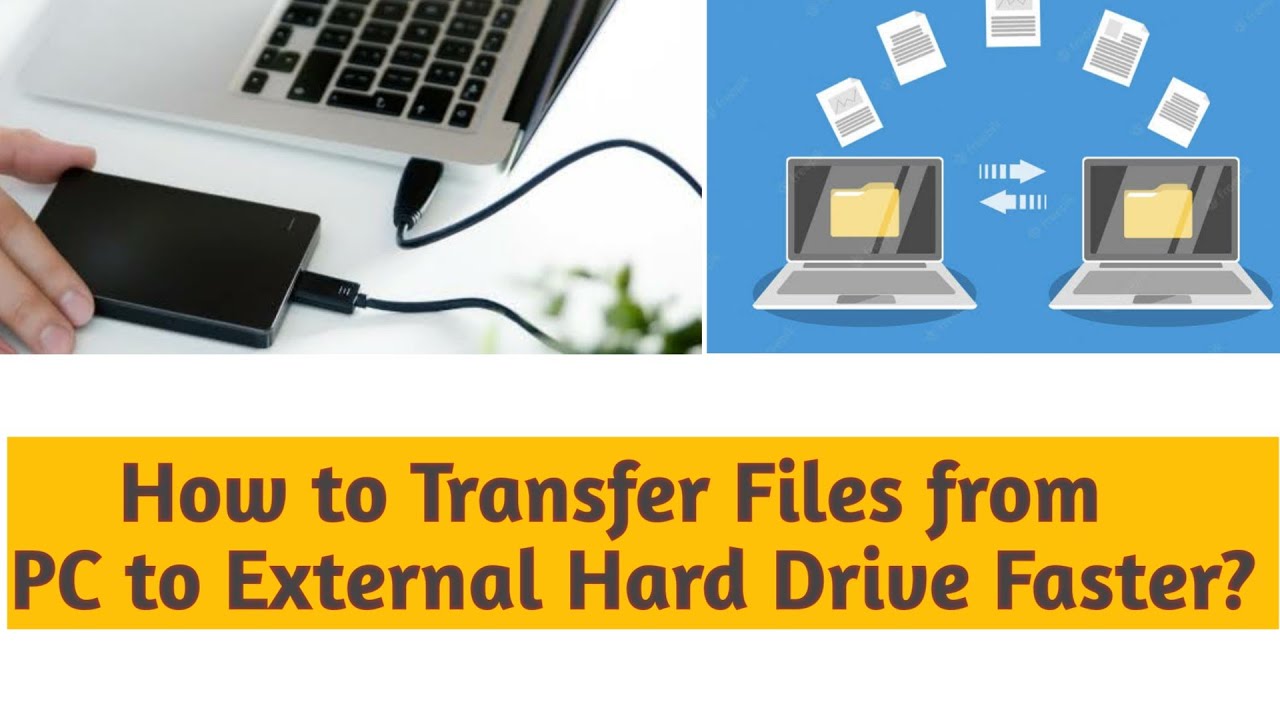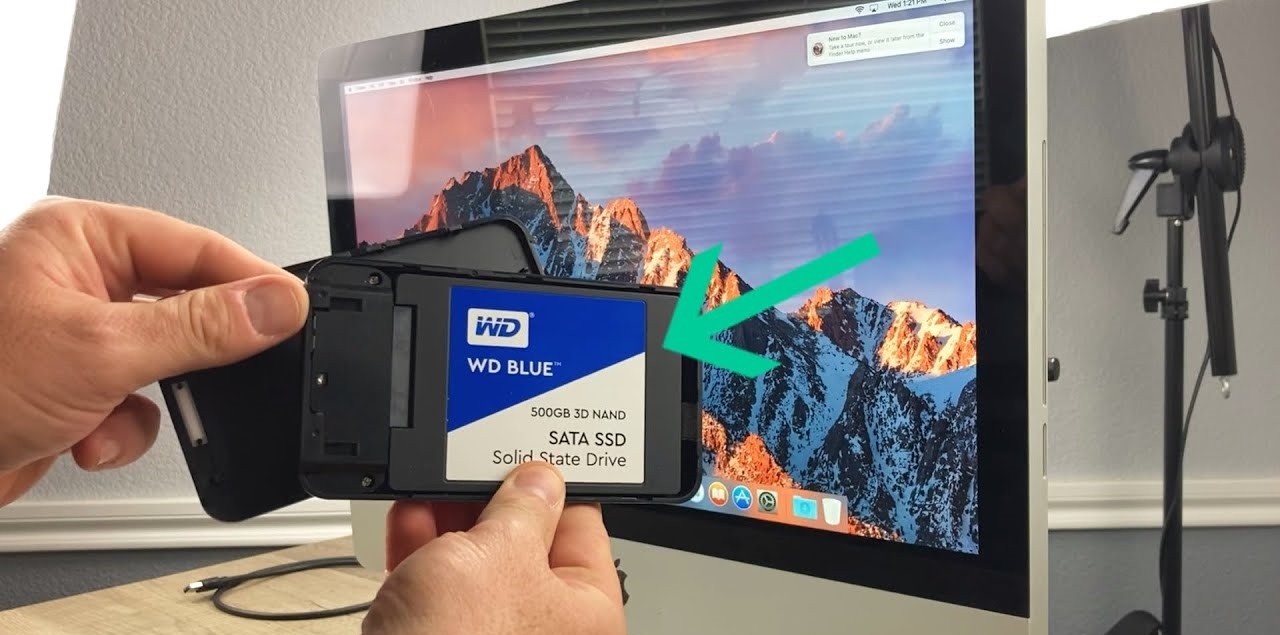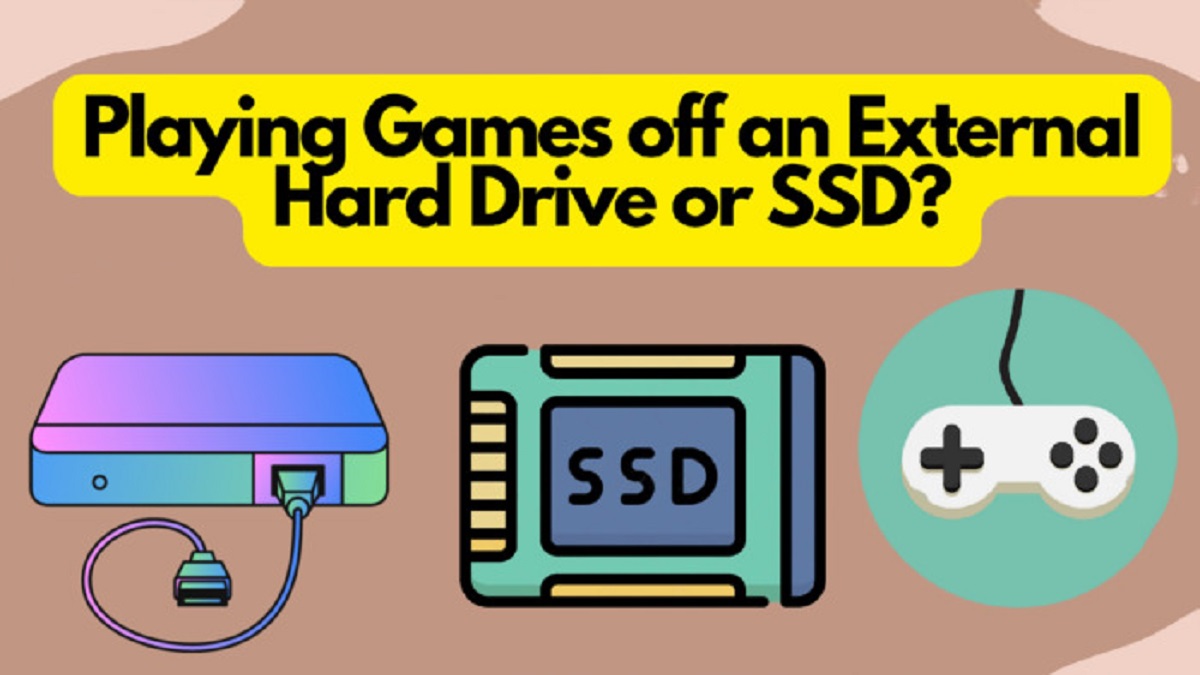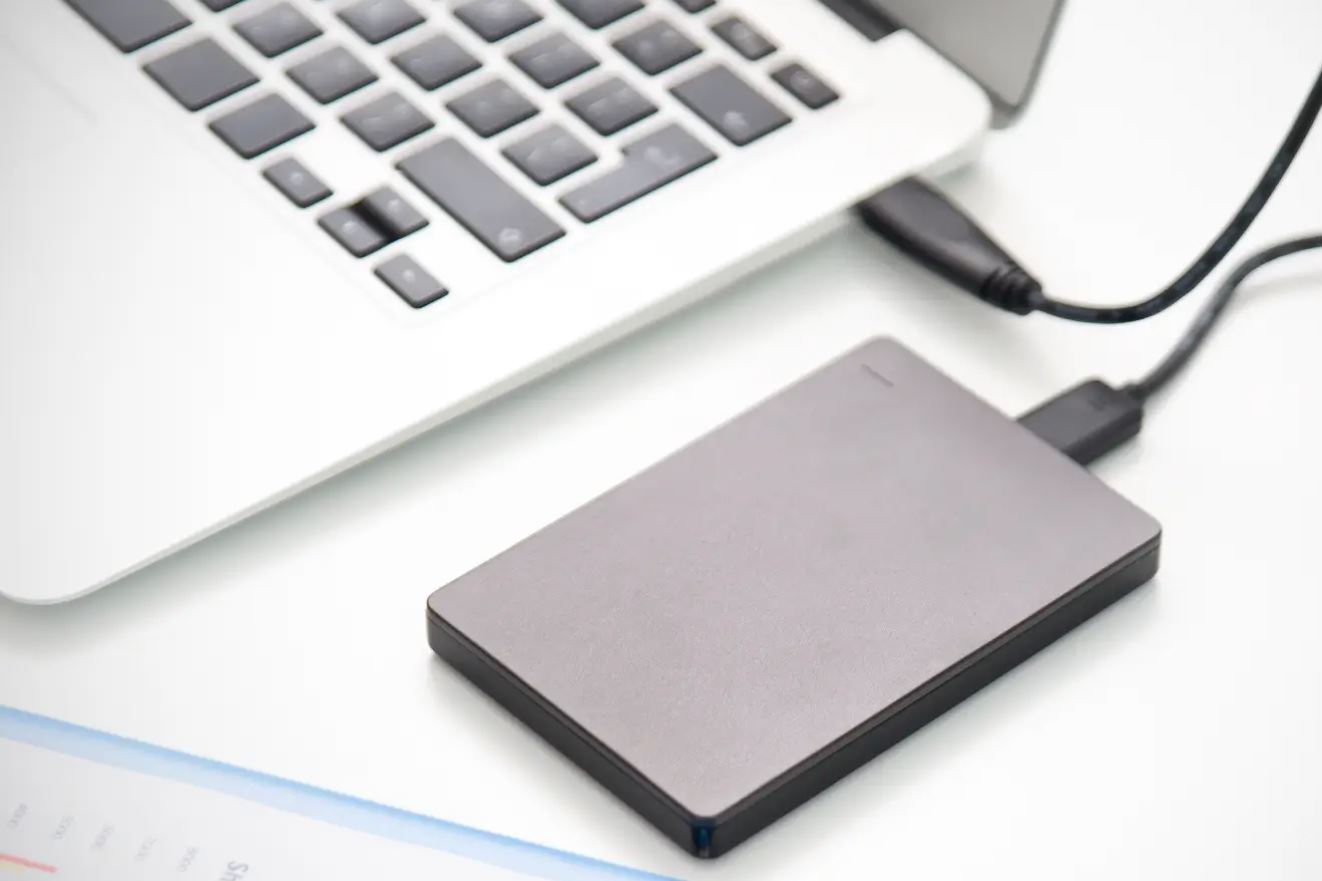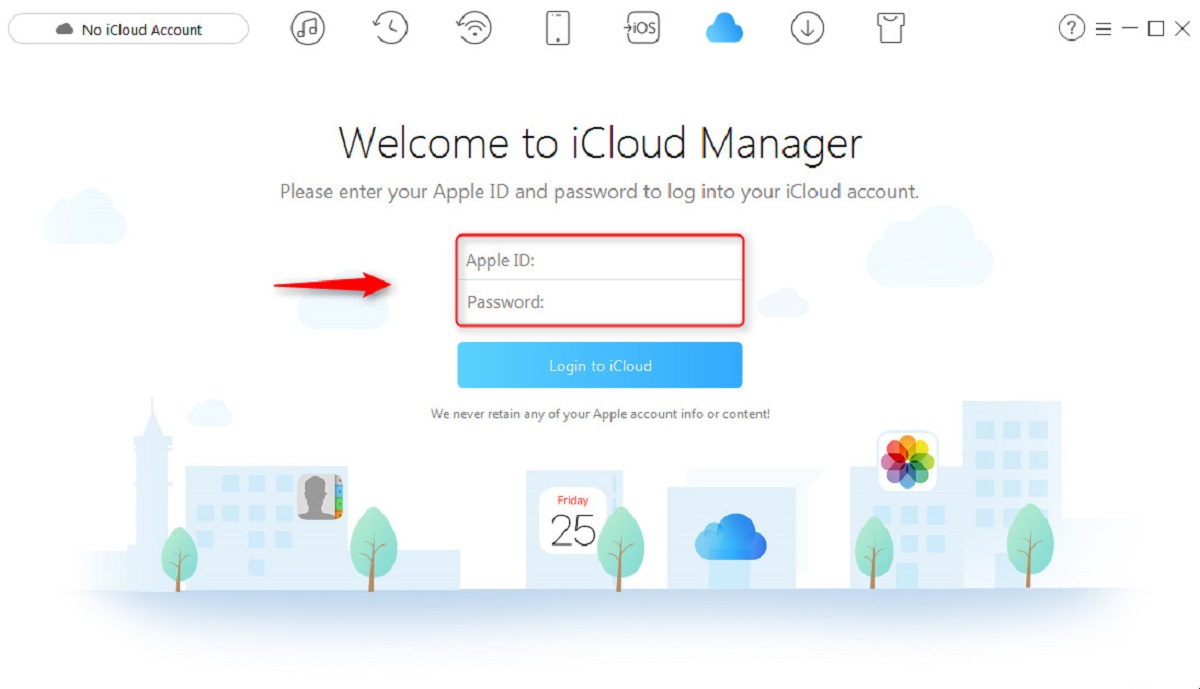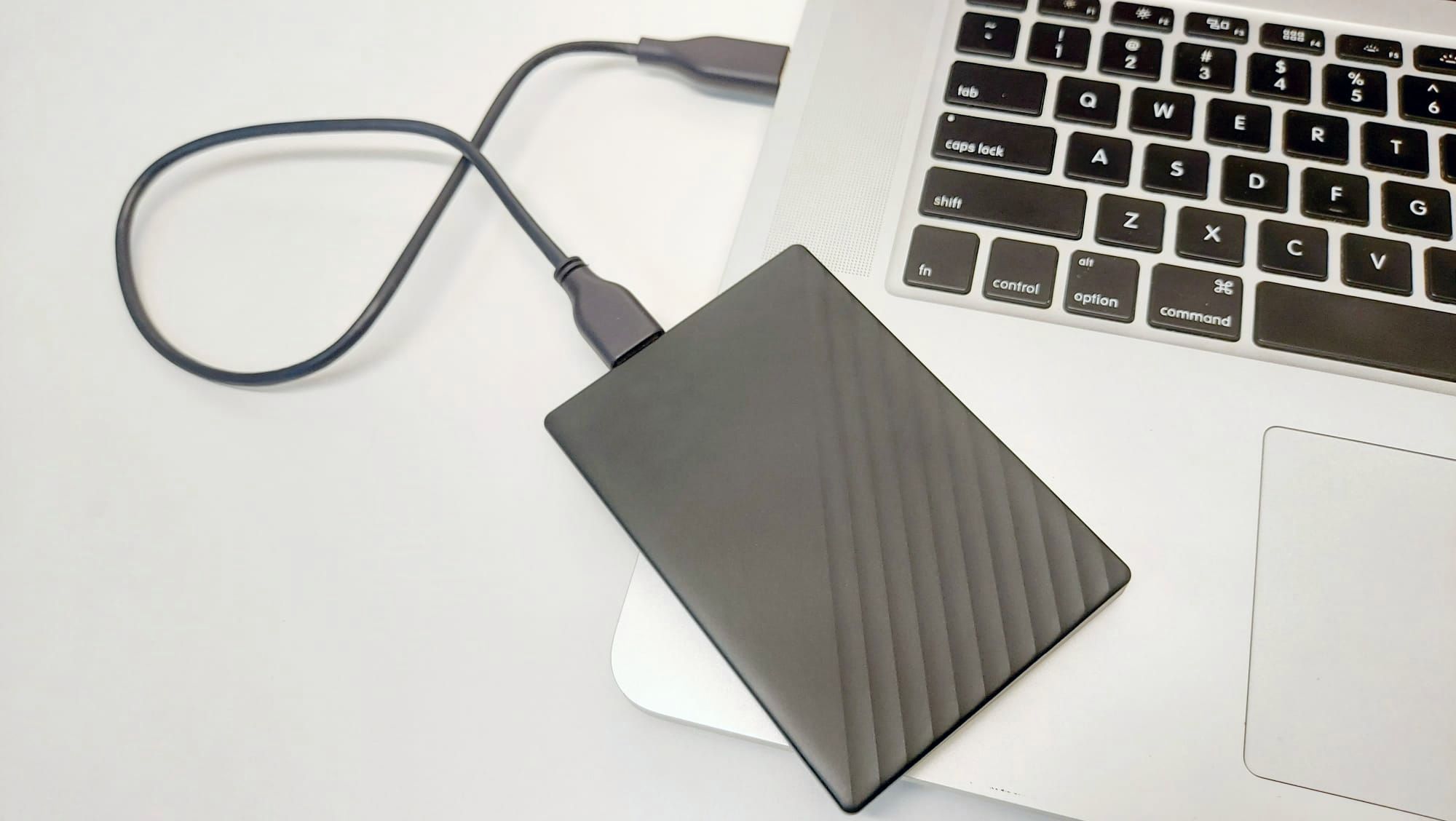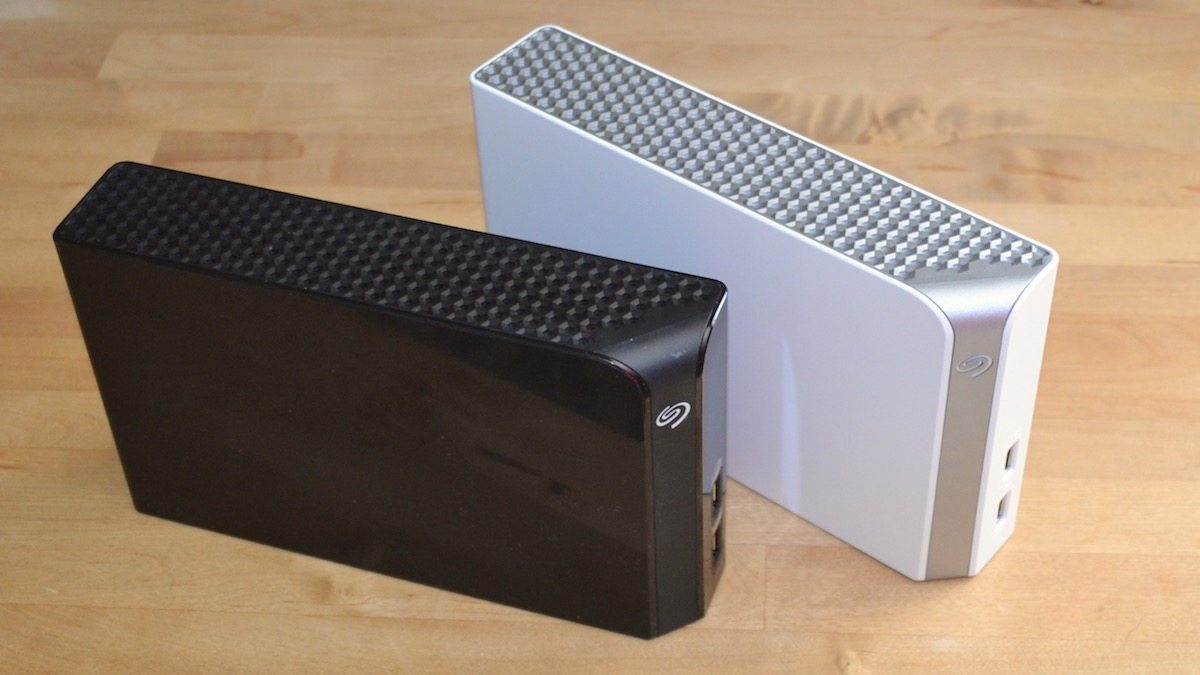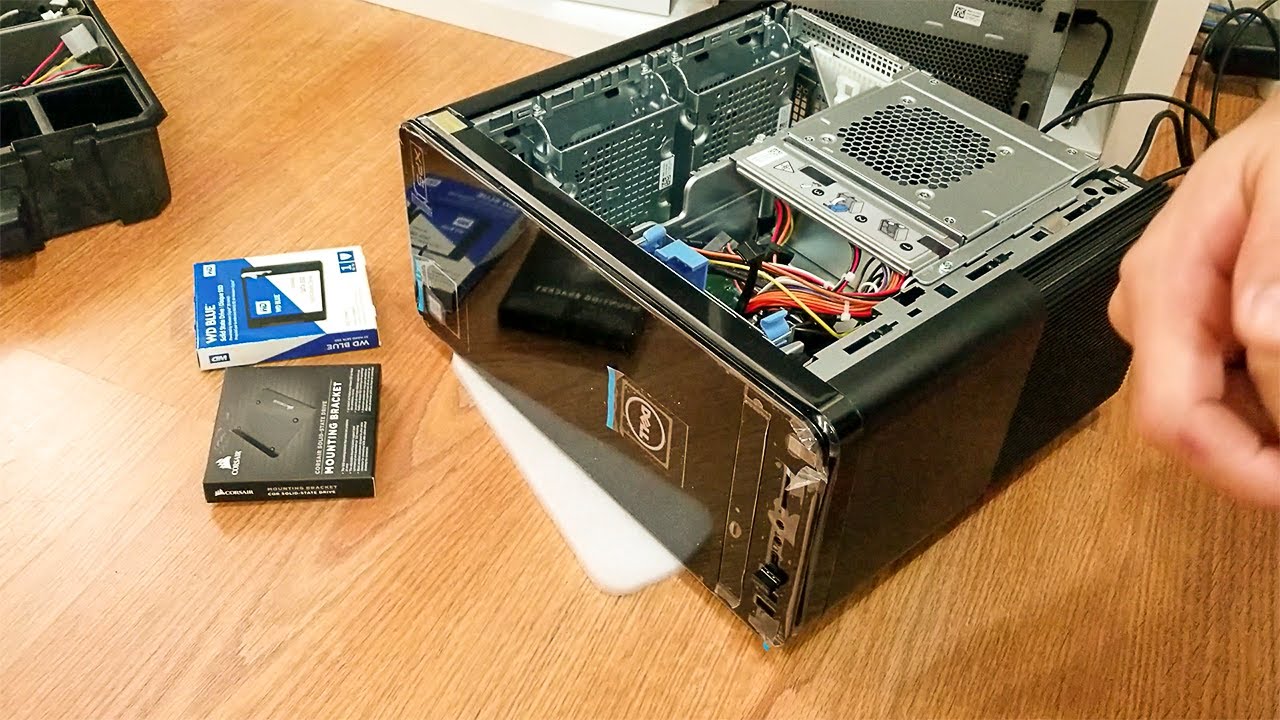Introduction
Welcome to the exciting world of copying files to an external hard drive faster! As technology continues to evolve, our reliance on digital data increases, and so does the need for efficient file transfer. Whether you’re backing up important documents, transferring large multimedia files, or simply organizing your data, finding ways to speed up the process can save you valuable time and frustration.
In this article, we will explore various strategies and techniques to optimize file transfer speed to your external hard drive. By understanding the basics, optimizing your computer and external hard drive, utilizing file transfer tools, and making the most of advanced hardware, you’ll be well on your way to blazing-fast file transfers.
Before we dive into the specifics, it’s important to note that the speed of file transfer depends on multiple factors, such as the type of hard drive, the connection interface, the size and quantity of files, and the overall performance of your computer. Therefore, while implementing the strategies and techniques mentioned here can significantly improve your transfer speeds, it’s essential to manage your expectations and consider the limitations of your hardware.
Now, let’s get started on our journey to faster file transfers, where every second counts! From optimizing your computer to exploring advanced file transfer settings, we’ll equip you with the knowledge and tools to effortlessly move files to your external hard drive with lightning speed.
Understanding the Basics
Before delving into the various techniques to speed up file transfers, it’s crucial to understand the basics of how file transfers work. When you copy a file from your computer to an external hard drive, it involves a process of reading the data from your computer’s storage, transferring it through various channels, and writing it to the external hard drive’s storage.
Two main factors influence the speed of this process: the read speed of the source (your computer) and the write speed of the destination (the external hard drive). The read speed determines how quickly the data can be retrieved from your computer’s storage, while the write speed determines how quickly the data can be written onto the external hard drive.
Additionally, the connection interface between your computer and the external hard drive can impact the transfer speed. Common connection interfaces include USB 2.0, USB 3.0, USB-C, Thunderbolt, and eSATA. Each interface has different data transfer rates, with newer generations generally offering faster speeds. Ensuring that you have a compatible and high-speed connection interface is crucial for maximizing transfer speeds.
The size and number of files being transferred can also affect the overall transfer speed. Transferring a single large file will typically be faster compared to transferring several small files of the same cumulative size. This is because the process of initiating, establishing, and closing the file transfer session incurs additional overhead for each file.
Furthermore, the overall performance of your computer plays a role in file transfer speed. Factors such as CPU processing power, available RAM, and the health of your storage drive can impact how quickly your computer can read and process data for transfer. It’s worth considering these factors and ensuring your computer is optimized for optimal performance.
By understanding these fundamental aspects of file transfers, you’ll be better equipped to implement the strategies and techniques that follow. In the next sections, we’ll explore how to optimize your computer, external hard drive, and file transfer settings to achieve faster and more efficient file transfers.
Optimizing Your Computer
When it comes to speeding up file transfers to an external hard drive, optimizing your computer’s performance can go a long way. Here are some steps you can take to ensure your computer is running at its best:
1. Close Unnecessary Programs: Before starting a file transfer, close any unnecessary programs running in the background. These programs can consume valuable system resources and slow down the transfer speed.
2. Free Up Disk Space: Ensure that your computer has sufficient free disk space. When your storage drive is nearly full, it can affect the performance of file transfers. Delete unwanted files or move them to an external storage device to create more space.
3. Scan for Malware: Run a thorough scan using reliable antivirus software to check for any malware or viruses that may be affecting your computer’s performance. Malware can slow down your system and impact file transfer speeds.
4. Update Drivers: Ensure that all your device drivers, especially the ones related to your storage devices, are up to date. Outdated drivers can cause compatibility issues and hinder file transfer speeds. Visit the manufacturer’s website or use driver update tools to keep your drivers current.
5. Optimize Power Settings: Adjust your power settings to prioritize performance over power savings. In the Control Panel or System Preferences, select the High-Performance mode or a similar setting to maximize your computer’s capabilities during file transfers.
6. Defragment Your Hard Drive: If you’re using a traditional hard drive, consider defragmenting it to improve file access speed. However, note that this step is not necessary for solid-state drives (SSDs) as they don’t suffer from fragmentation-related issues.
7. Upgrade Hardware: If your computer is older or lacks sufficient processing power, upgrading hardware components like RAM and storage drives can significantly improve file transfer speeds. Consider adding more RAM or replacing your hard drive with a faster SSD.
By implementing these optimization techniques, you can ensure that your computer is in top shape for faster file transfers. In the next sections, we’ll explore specific strategies to optimize your external hard drive and leverage advanced file transfer tools for even greater efficiency.
Optimizing the External Hard Drive
Now that you’ve optimized your computer, it’s time to focus on optimizing your external hard drive for faster file transfers. Here are some strategies to consider:
1. Format with the Right File System: Choosing the appropriate file system can impact the speed of file transfers. For Windows users, formatting the external hard drive with NTFS is recommended, as it offers better performance for larger file sizes. macOS users should consider formatting with APFS or Mac OS Extended (Journaled).
2. Enable Write Caching: Enabling write caching can improve the transfer speed by allowing your computer to write data to the external hard drive in bursts, rather than continuously. However, make sure to eject the drive safely before physically disconnecting it to prevent data loss.
3. Keep the Drive Cool: Overheating can reduce the performance and lifespan of your external hard drive. Ensure proper ventilation and avoid placing the drive in direct sunlight or near heat sources. Consider using a cooling pad or a dedicated fan for added cooling.
4. Regularly Defragment (Traditional Hard Drives): If you’re using a traditional hard drive, regular defragmentation can help optimize its performance and improve file access times. This process rearranges fragmented files on the drive, resulting in faster read and write speeds. Note that this step is not necessary for SSDs.
5. Check for Drive Errors: Use built-in utilities like Windows’ chkdsk or macOS’s Disk Utility to scan and repair any errors on your external hard drive. These errors, if left unaddressed, can slow down file transfer speeds and potentially lead to data corruption.
6. Avoid Excessive Fragmentation: As files are added, modified, and deleted on the external hard drive, fragmentation can occur. To minimize fragmentation and maintain optimal performance, periodically organize and consolidate your files by rearranging or deleting unnecessary files.
7. Keep Firmware Updated: Check for firmware updates from the manufacturer’s website for your external hard drive. Firmware updates can fix bugs, enhance compatibility, and improve overall performance, including file transfer speeds.
By implementing these optimization techniques for your external hard drive, you can experience faster and more efficient file transfers. In the next sections, we’ll explore specific file transfer tools and settings that can further enhance your speed and productivity.
Using File Transfer Tools
When it comes to maximizing file transfer speed to your external hard drive, using the right file transfer tools can make a significant difference. Here are some tools and techniques you can utilize:
1. Robocopy (Windows) and rsync (macOS/Linux): These command-line tools provide advanced file copy capabilities, allowing you to transfer files with greater control and efficiency. They have features like multi-threading, error handling, and resume support, which can significantly enhance transfer speeds, especially for large files and directories.
2. TeraCopy (Windows): TeraCopy is a popular third-party file transfer utility for Windows that offers features like asynchronous copying, error recovery, and pause/resume functionality. It can optimize the transfer process, maximize speed, and provide detailed transfer reports for you to monitor progress.
3. FastCopy (Windows): FastCopy is another lightweight and efficient file transfer tool for Windows. It utilizes buffer memory and adjusts the read/write speeds to achieve faster transfers. It also supports advanced settings like copying files based on specific conditions and excluding certain file types.
4. Finder (macOS) and File Explorer (Windows): The built-in file managers, Finder (macOS) and File Explorer (Windows), can be used for basic file transfers. While they may not have advanced features, they are reliable and integrated into the respective operating systems.
5. Cloud Storage Solutions: Utilizing cloud storage services like Dropbox, Google Drive, or OneDrive can be an alternative way to transfer files to your external hard drive. By uploading files to the cloud and then downloading them onto the external hard drive, you can potentially bypass limitations related to hardware or network speeds.
6. External Hard Drive Synchronization Software: Some external hard drive brands offer their own synchronization software, allowing you to automatically keep specific folders or files synced between your computer and the external hard drive. These tools can optimize file transfers by only copying the modified portions of files, reducing overall transfer time.
Remember to research and choose the file transfer tool that best suits your needs and operating system. These tools can enhance the transfer process, improve error handling, and ultimately speed up the file transfer speeds to your external hard drive. In the following section, we’ll explore additional settings and considerations to further optimize your file transfers.
Changing File Transfer Settings
Fine-tuning your file transfer settings can help squeeze out some extra speed when copying files to your external hard drive. Here are some settings you can modify to optimize your transfers:
1. Disable File Indexing: File indexing services like Windows Search or Spotlight (macOS) can consume system resources and slow down file transfers. Consider disabling these services temporarily during file transfers to improve speed.
2. Adjust Buffer Sizes: Increasing the buffer sizes for file transfers can help reduce the number of read and write operations, improving overall speed. However, keep in mind that setting the buffer size too high may lead to memory constraints. Experiment with different buffer sizes to find the optimal balance.
3. Change Transfer Mode: Depending on the capabilities of your external hard drive and the connection interface, you may have different transfer mode options available. For example, USB 3.0 can support both high-speed and full-speed transfer modes. Selecting the appropriate transfer mode for your specific hardware can improve file transfer speeds.
4. Disable Compression: Some file transfer tools or protocols may offer compression options to reduce file size during transfers. However, enabling compression can increase the processing overhead and potentially slow down transfers. If speed is your priority, consider disabling compression.
5. Enable Turbo Mode (if available): Some external hard drives come with a turbo or high-performance mode that can boost transfer speeds. Check the user manual or manufacturer’s website to see if your drive supports such a feature and enable it if available.
6. Use USB 3.0 or Higher: If your computer and external hard drive support USB 3.0 or higher, utilizing this faster connection interface can significantly improve transfer speeds compared to USB 2.0. Make sure to connect your drive to a compatible USB port for maximum speed.
7. Copy in Batches: Instead of transferring all files at once, consider copying them in smaller batches. This can help manage the load on your computer and external hard drive, potentially resulting in faster and more stable transfers.
Remember to experiment and test different settings to determine what works best for your specific setup. Not all settings may have a significant impact on transfer speeds, so it’s essential to find the optimizations that yield the best results. In the next section, we’ll explore how using an SSD external hard drive can further enhance your file transfer experience.
Using an SSD External Hard Drive
When it comes to fast file transfers, using a solid-state drive (SSD) as your external hard drive can provide a significant boost in speed and performance. Unlike traditional hard drives, SSDs don’t rely on spinning disks or moving parts. Instead, they use flash memory, allowing for faster data access and transfer rates. Here are the advantages of using an SSD external hard drive:
1. Speed: SSDs offer much faster read and write speeds compared to traditional hard drives. This means that file transfers to and from the SSD external hard drive will be noticeably quicker, reducing the overall time required for the transfer process.
2. Reliability: Since SSDs don’t have any moving parts, they are more resistant to physical damage caused by accidental drops or vibrations. This makes SSD external hard drives more reliable and less prone to data loss, ensuring the safety of your files during transfers.
3. Compact and Lightweight: SSDs are typically smaller and lighter than traditional hard drives. This makes SSD external hard drives more portable and convenient to carry around, making them an excellent choice for frequent travelers or those who require mobility.
4. Low Power Consumption: SSDs are more energy-efficient compared to traditional hard drives. This means that using an SSD external hard drive will have a lesser impact on your device’s battery life, allowing for longer file transfer sessions without requiring constant power sources.
5. No Fragmentation: Unlike traditional hard drives, fragmentation is not an issue with SSDs. Files are stored in a more organized and efficient manner, resulting in faster read and write speeds during file transfers.
6. Longer Lifespan: SSDs generally have a longer lifespan compared to traditional hard drives. This means that an SSD external hard drive will likely serve you for a longer period, ensuring reliable and speedy file transfers.
7. Compatibility and Connectivity: SSDs generally come with standard connection options like USB 3.0, USB-C, or Thunderbolt, ensuring compatibility with a wide range of devices. This allows you to take advantage of the high-speed transfer capabilities of both the SSD and the connection interface.
Using an SSD external hard drive can significantly enhance your file transfer experience by providing faster speeds, greater reliability, and improved portability. If you often deal with large files or frequently transfer data, investing in an SSD external hard drive is a worthwhile consideration.
Now that we have explored various techniques and strategies to speed up file transfers, it’s time to bring it all together in the concluding thoughts of this article.
Concluding Thoughts
Efficiently copying files to an external hard drive is essential for organizing, backing up, and transferring data. By implementing the strategies and techniques discussed in this article, you can significantly improve file transfer speeds and save valuable time. Let’s recap some key points:
Understanding the basics of file transfers, such as read and write speeds, connection interfaces, and file sizes, helps set the foundation for optimizing your transfer process.
Optimizing your computer’s performance includes closing unnecessary programs, freeing up disk space, updating drivers, and considering hardware upgrades if necessary.
Optimizing the external hard drive involves formatting with the appropriate file system, enabling write caching, maintaining operating temperatures, defragmenting (for traditional hard drives), and keeping firmware up to date.
Using file transfer tools like Robocopy, TeraCopy, and cloud storage services can provide additional control and convenience during file transfers.
Tweaking file transfer settings such as disabling file indexing, adjusting buffer sizes, changing transfer modes, and optimizing compression can further enhance transfer speeds.
Using an SSD external hard drive offers superior speed, reliability, portability, and longevity, making it an excellent investment for faster file transfers.
Remember, each setup may have unique characteristics and limitations, so it’s essential to experiment and find the strategies that work best for you. Be mindful of the specific capabilities and compatibility of your hardware and software.
With the knowledge and techniques shared in this article, you’re now equipped to copy files to your external hard drive faster and more efficiently. Enjoy the benefits of faster transfers as you organize your data, back up important files, or enjoy multimedia content on the go.
Remember, time is precious, and optimizing the speed of your file transfers allows you to focus on what truly matters – maximizing productivity and enjoying your digital experience without unnecessary delays. Happy file transferring!







